Marc-Edouard Vlasic was selected 35th overall in the 2005 NHL Draft. At 19 years old, the Quebec Remparts defenseman jumped into the NHL for the 2006-07 season with little difficulty. As a rookie defenseman, he averaged over 22 minutes of ice time and became a lock for the San Jose Sharks’ blue line for over a decade.
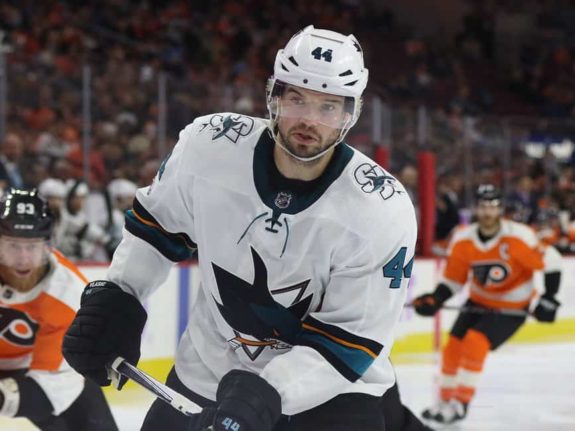
Radim Simek had a less traditional path to NHL action. He signed a two-way contract with the Sharks after three successful seasons in the top Czech professional league. After spending the whole 2017-18 season with the San Jose Barracuda, he played the following year in the NHL. The 2018-19 season saw the blueliner establish himself next to Brent Burns with great success for a small stretch.
Unfortunately, 2019-20 marked a huge decline in both players’ games. Their falls from glory matched the Sharks’ underperformance, en route to the third-worst record in the NHL. Even as the team marginally improved in 2020-21, both blueliners fell to third-pairing duty. This was Vlasic’s first season averaging under 20 minutes of ice time ever.
Now in 2021-22, Vlasic and Simek remain on the usual third pairing. However, both have missed the last two weeks of action as the Sharks deal with a COVID-19 outbreak. Both are scheduled to return for Saturday’s contest against the Colorado Avalanche; however, I believe there is a reasonable shot neither return to the team’s roster.
Middleton and Karlsson’s Chemistry
Mario Ferraro has established himself as the best left-handed defenseman on the team and become part of a defensive-oriented pair with Brent Burns. With Nikolai Knyzhov’s injury, there was a spot in the team’s top-four available for either of the veteran blueliners to slot alongside a resurgent Erik Karlsson.
Yet, they both missed out. Long-time AHLer Jacob Middleton, who, in fairness, had a decent training camp and a nice start to the season, outplayed both veterans.
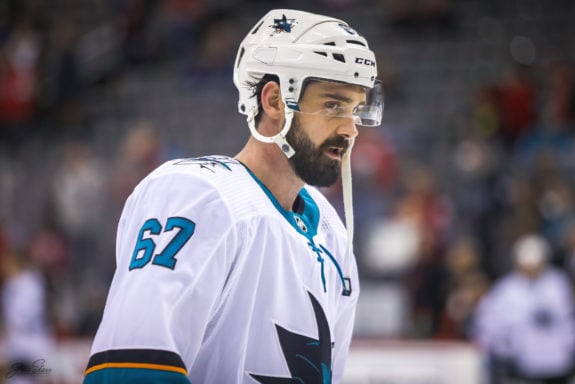
And, that spot in the top four will not be up for grabs when Middleton and Karlsson return from COVID protocol. The team’s second pairing was the most dominant, according to MoneyPuck. The pairing controls 55 percent of expected goals, which is the only Sharks pair above 50 percent. However, they are more sheltered than the Ferraro-Burns top pair.
Karlsson’s six points in seven games are the strongest start the 31-year-old has posted since joining San Jose. With that career resurgence being next to Middleton, it’s impossible to believe either Simek or Vlasic could jump over him any time this season.
Knyzhov’s Eventual Return
While the Russian blueliner has just 59 NHL games of experience, he will be a shoo-in to the team’s starting lineup when he returns from injury. Knyzhov has another month at minimum of recovery from a lower-body injury that limited him in training camp festivities. He had two goals and 10 points in 56 games in his first NHL season.
Last season, Knyzhov slotted primarily alongside Karlsson. Between Knyzhov and Vlasic, the Swedish defenseman’s only partners that played a 100-minute sample size, the Russian was much better at aiding the Swede. They controlled 44 percent of expected goals together, which is under average, but an improvement on Vlasic and Karlsson’s partnership that controlled just 37 percent.
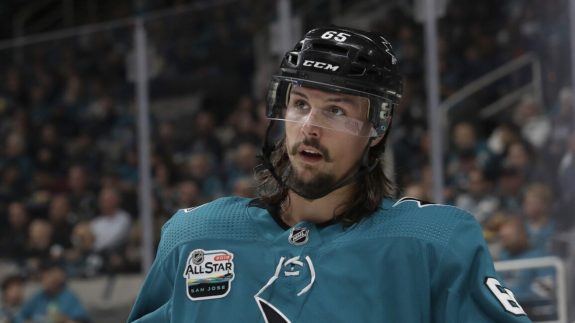
Even if Middleton prevents Knyzhov from the second pair, the Russian should have a third-pairing role carved out already. Last season, Knyzhov’s brief time on the third pair with Vlasic or Simek was extremely successful. With either veteran, the 23-year-old’s pairing controlled at least 60 percent of expected goals. The Russian blueliner excelled in limited roles and should take one of Vlasic or Simek’s spots when returning from injury.
Youngsters to Watch
If Knyzhov healthily returns from injury, then only one of Vlasic and Simek remains in the lineup. Between youngsters Ryan Merkley and Santeri Hatakka, I believe the other veteran should/could be booted from the lineup. I know… Merkley is already headed back to the San Jose Barracuda, and he’s not a defensively reliable blueliner. The 21-year-old’s style is offense-heavy and not defensive-oriented; frankly, that upside and skill are why the team invested such a high draft pick on him.
Merkley had three assists in four games before his call-up to the NHL. In the American Hockey League, he was playing on the top power play, penalty kill, and team’s first pairing in a much better season from his professional debut last year. In the NHL, he was sheltered. He started only 3.4 percent of his shifts in the defensive zone, the lowest of any San Jose blueliner. He only had one point, coming from his first NHL goal, that was a shot deflected by an opposing defenseman in front of the net. His controlling of shot attempts (Corsi%) was just under 50 percent and he had a plus/minus rating of 0.
The only other San Jose comparables to Merkley’s noticeably low defensive shift start percentage, by the way, are Simek and Vlasic. With 4.2 percent and 5.9 percent, respectively, they are the only Sharks defensemen under 10 percent. Merkley played a similar role to those veterans while having a much larger offensive runway than both.
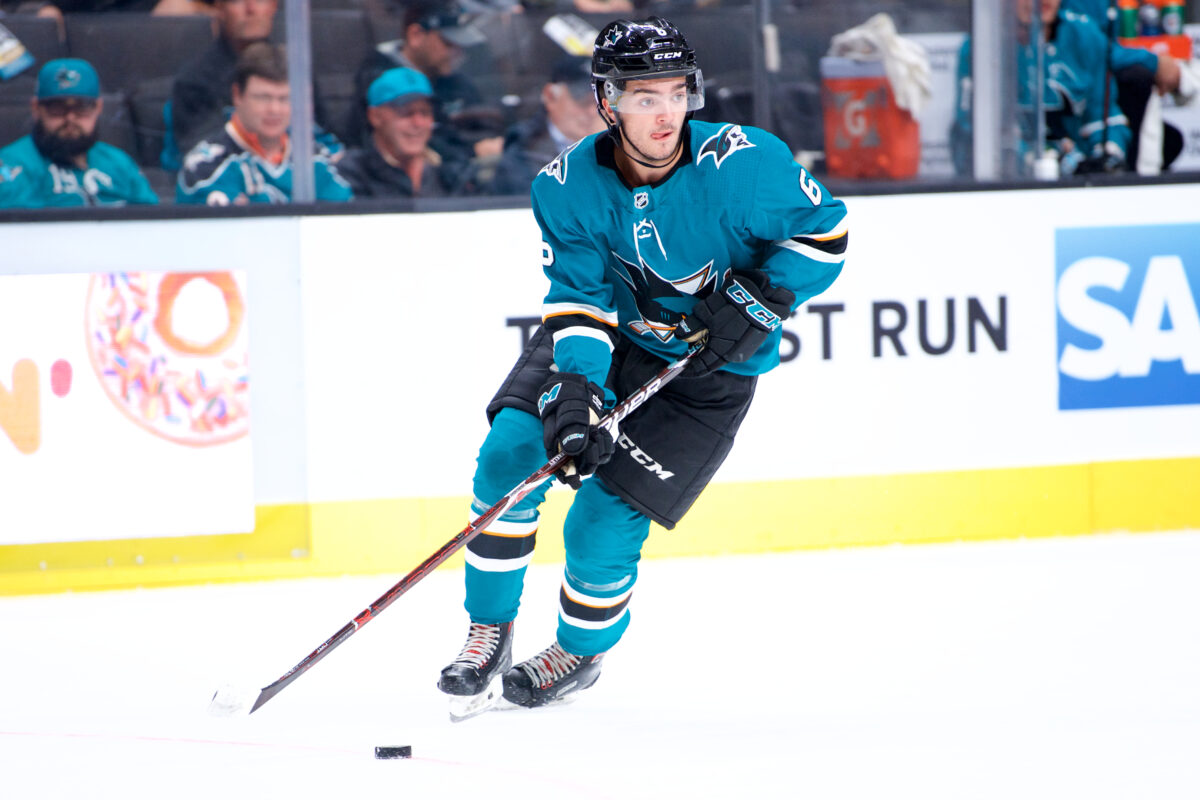
The most likely to replace one of the veterans, though, is Hatakka. The 2019 sixth-rounder obviously lacks the offensive upside of Merkley, but he already plays the defensively reliable game that coaches love. This saw him remain as the seventh defenseman for the beginning of the season until a COVID-19 outbreak shot him into a large role.
His defensive plays have already stuck out to me. In his six games of experience, he played sound in a primarily defensive role. Especially his great stick lifts, which were best on display in his debut against the Winnipeg Jets when he limited and frustrated an elite winger in Nikolai Ehlers.
Related: Sharks’ Dahlen Overcoming Odds To Become A Calder Candidate
To contrast to the veterans, Hatakka began 12.7 percent of his shifts in the defensive zone. His Corsi% was 42 percent, but that is expected when starting in the defensive zone more frequently than minute-eaters Ferraro and Burns. His marginally negative impact on controlling of expected goals is most comparable to Simek and decently worse than Vlasic. But again, that was with a much less sheltered role. Both these youngsters have much more runway to grow into quality NHLers, while Simek and Vlasic’s age is in tune with their regression the last few seasons.
A Rough Look for Wilson
The main reason to keep the veterans in the lineup over the young talent in the Sharks’ prospect pool is the horrible look it has on the team’s financial future. Simek has three years at $2.25 million remaining per season. Even worse, former defensive star Vlasic remains on the books at a $7 million average annual value for five more years.
Keeping over $9 million in the press box would look horrible, especially when their talents will only regress with time. Vlasic’s massive cap hit, term, and no-movement clause makes him untradeable, but Simek already being benched in favor of 20- and 21-year-old’s would make him even more difficult to move.
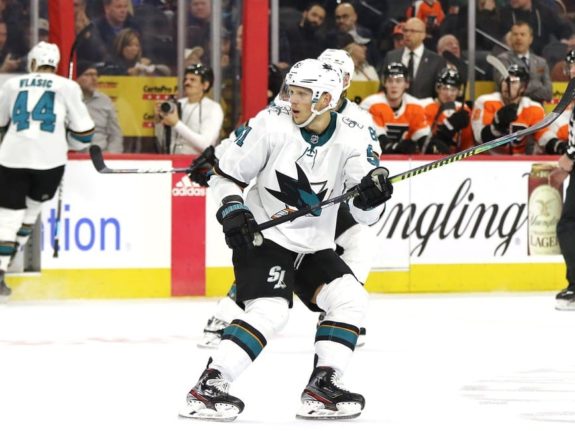
Doug Wilson already has overpaid players for their services, but none of his large salaries have ever been outright removed from the lineup. However, I feel there are clear reasons to withhold Simek and Vlasic from the starting lineup due to the offensive upside and youth of the other options.